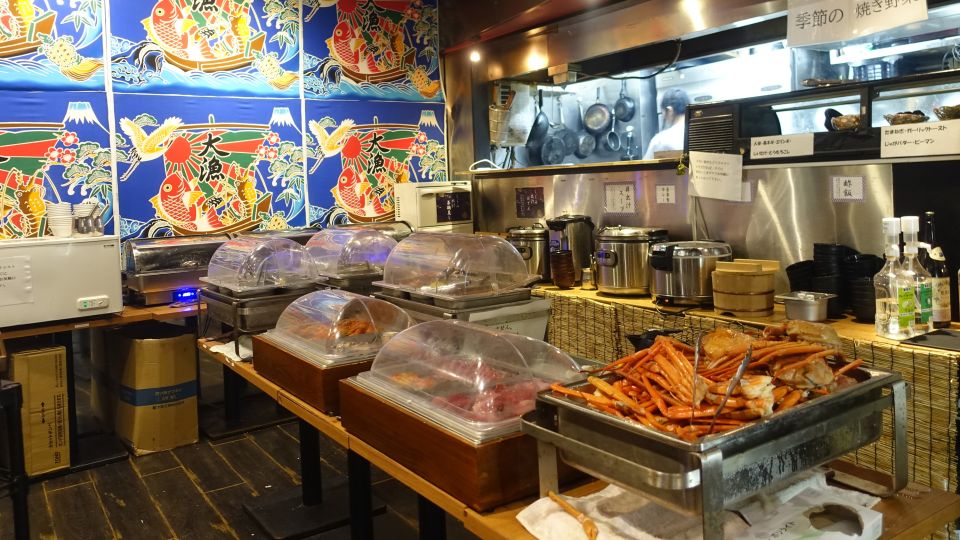Kudos if you speak perfect Japanese and order food at a sushi bar near Tokyo.
If possible, chances are you will be able to visit during your next trip to JapanYou may be able to get a better deal by blending in with the locals.
Japan has never been a destination known for raising prices for foreigners. But overtourism – fueled by a combination of pent-up post-Covid demands (aka “revenge travel”) and the weak local currency – has recently led restaurants in the country to consider the benefits of tiered pricing.
“People say it’s discrimination, but it’s really difficult for us to serve foreigners, and it’s beyond our capacity,” said Shogo Yonemitsu, who runs Tamatebako, an all-you-can-eat fish grill in ShibuyaTokyo’s vibrant shopping area.
He claims he doesn’t charge tourists extra, instead offering locals a 1,000 yen ($6.50) discount.
“We need (this pricing system) for cost reasons,” Yonemitsu said.
Japan only fully reopened in the 1970s fall 2022 after the lifting of travel restrictions due to the pandemic.
This year, spurred by a weak yen that has fallen to its lowest level against the dollar in decadesthe tourists are back – in droves.
The number of tourists visiting Japan in the first half of 2024 reached a record 17.78 million, putting the country on track to break the record of 31.88 million tourists set in 2019, according to government data.
In response, places across the country have begun imposing tourist taxes, capping the number of visitors and even banning alcohol sales in an attempt to curb the effects of over-tourism.
Earlier this year, a resort at the foot of Mount Fuji set up a gigantic net to block the view of the iconic peak after tourists flocked for a photo opportunity, causing litter and traffic problems.
Meanwhile, tourism authorities in Hokkaido, the country’s northernmost prefecture known for its scenic views and ski resorts, this month urged businesses to offer lower prices to locals.
And a mayor in western Japan said he is considering charging foreign tourists more than six times the local entrance fee to Himeji Castle, a UNESCO World Heritage site.
Elisa Chan, deputy director of the hospitality research centre at the Chinese University of Hong Kong, says price differentiation can be an effective way to combat overtourism.
“The owner may want to ensure that the sudden increase in tourist demand does not drive away all of his loyal and frequent local customers. Charging tourists more could be seen as a solution to this,” she said.
Yonemitsu, the restaurateur, said the influx of tourists is not just due to adding extra tables.
He said his seafood grill had to hire extra English-speaking staff to take orders, process bookings and explain everything from how to tell the difference between sashimi and grilled food to where to leave their luggage to tourists. Failure to do so would lead to “chaos,” he said.
“Some people say, ‘We don’t do this in our country.’ But think about how bad the English skills of the Japanese are. We are not yet at the level where we can call ourselves a tourism powerhouse. We just can’t speak English, and yet we can’t say the wrong thing. It’s really stressful,” he said.
Although it is a new phenomenon in Japan, differential pricing is quite common in other parts of the world. Because the cheaper prices for residents are often written in the local language, foreign tourists may not even know that they have paid more.
In Japan, it is up to each company to decide for themselves whether they want to implement two-tier pricing. This is not always the case elsewhere, as governments can intervene.
In VeniceFor example, authorities have introduced an entrance fee to the Italian city and set up an online reservation system to combat overtourism.
Meanwhile, some Japanese entrepreneurs are trying to get creative.
Shuji Miyake, who runs an izakaya, or informal pub, in Tokyo’s Tsukiji district, is offering lobster ramen for 5,500 yen ($35) — four times the price of the shrimp noodles his regulars often order. The premium dish is marketed to tourists, who, he says, have a bigger budget to try new things.
Australian tourist Phoebe Lee said she spent less money on a recent two-week trip to Japan than she had on previous trips to the country. And she wouldn’t mind paying a little more if the weak yen makes life harder for locals.
“This way we support local businesses so that we can continue to provide great experiences for our lucky visitors and preserve important parts of Japanese culture, such as small family-run restaurants or authentic ryokans (traditional inns),” she said.
CNN’s Junko Ogura contributed reporting.
For more CNN news and newsletters, create an account at CNN.com

